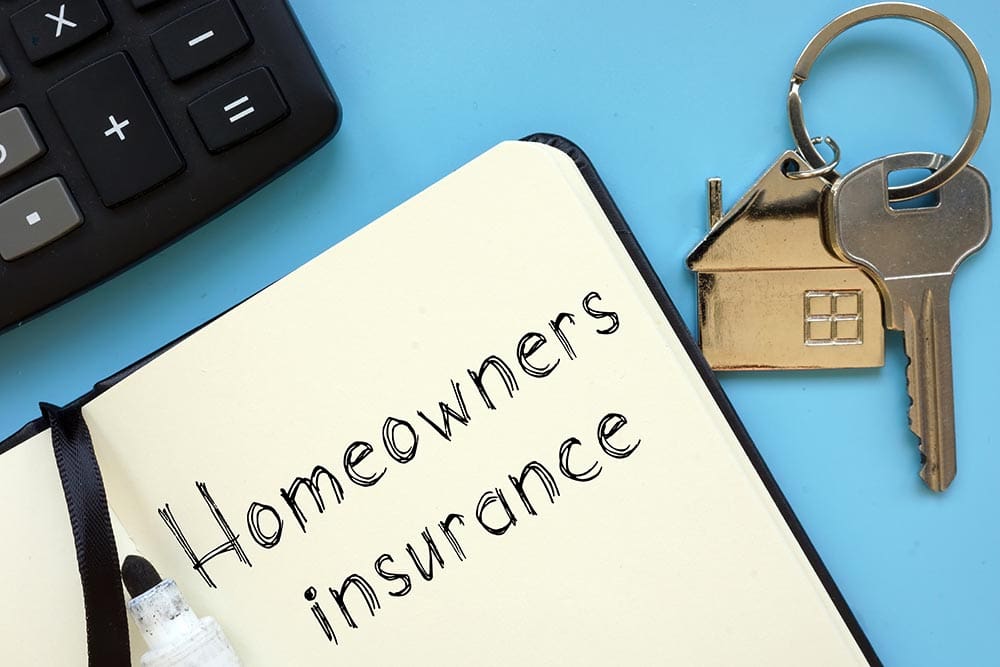When you’re buying a home or renewing your homeowners insurance, one question often pops up: Is my homeowners insurance based on my property’s value? It’s a fair assumption to make—after all, the value of your home feels like it should dictate how much coverage you need or what you’ll pay in premiums. But the truth is a bit more nuanced than that. Let’s dive into this topic, unpack how homeowners insurance really works, and clear up some common misconceptions along the way. By the end, you’ll have a solid grasp of what drives your insurance costs and why property value isn’t the whole story.
The Short Answer: It’s Not Quite That Simple
At first glance, you might think homeowners insurance premiums are tied directly to how much your house is worth on the market. A $500,000 home should cost more to insure than a $200,000 one, right? Well, not exactly. While property value plays a role, it’s not the primary factor insurance companies use to determine your coverage or premiums. Instead, they focus on something called the replacement cost—the amount it would take to rebuild your home from scratch if it were destroyed. That’s where the real calculation begins.
But don’t worry if that sounds confusing. We’ll break it down step by step, explore how property value fits in, and look at the other factors that shape your insurance policy. Grab a coffee, and let’s get into it!
Understanding Replacement Cost vs. Property Value
To get why homeowners insurance isn’t solely based on property value, we need to distinguish between two key terms: market value and replacement cost.
- Market Value: This is what your home is worth if you sold it today. It includes the house itself, the land it sits on, and factors like your neighborhood’s desirability or the local real estate market. For example, a cozy bungalow in a trendy urban area might fetch $600,000 because of its location, even if the house itself isn’t huge or fancy.
- Replacement Cost: This is the price tag for rebuilding your home from the ground up, using similar materials and craftsmanship, at today’s construction costs. It doesn’t include the land—just the structure. That same bungalow might only cost $250,000 to rebuild if it’s a straightforward design with standard materials.
Homeowners insurance is designed to protect the structure of your home (plus your belongings and liability risks), not the land or its market appeal. So, insurers base your coverage on the replacement cost, not what Zillow says your house is worth. This distinction is critical because land doesn’t burn down in a fire or get wrecked by a storm—it’s the building that needs replacing.
A Real-World Example
Imagine two identical houses—one in rural Kansas and one in downtown San Francisco. They’re the same size, built with the same materials, and have the same features. The Kansas home might sell for $150,000, while the San Francisco one goes for $1.2 million, thanks to its prime location. But if both homes burned down, the cost to rebuild them might be nearly identical—say, $200,000 each—because construction costs don’t fluctuate as wildly as real estate markets do. Their insurance policies would reflect that $200,000 replacement cost, not their vastly different property values.
This is why tying insurance directly to market value wouldn’t make sense. You don’t need $1.2 million in coverage for the San Francisco house when only a fraction of that would rebuild it.
Does Car Insurance Cover Accidents on Private Property?
What Factors Do Influence Homeowners Insurance?
If property value isn’t the main driver, what does determine your homeowners insurance? Insurers look at a mix of factors to calculate both your coverage needs and your premiums. Here’s a closer look:
1. Replacement Cost Details
To estimate replacement cost, insurers consider:
- Square Footage: Bigger homes cost more to rebuild.
- Construction Materials: A brick house is pricier to replace than a vinyl-sided one.
- Special Features: Think custom kitchens, hardwood floors, or a new roof—these bump up the cost.
- Local Labor and Material Costs: Building in New York City is more expensive than in a small town.
Most policies aim to cover 100% of the replacement cost, though some offer “extended replacement cost” coverage (e.g., 125% of the estimated cost) to account for unexpected spikes in construction prices after a disaster.
2. Property Value’s Indirect Role
Okay, so property value isn’t the star of the show—but it’s not irrelevant. Higher-value homes in expensive areas often have pricier finishes or larger footprints, which can increase replacement costs. Plus, if your home’s market value is sky-high, you might opt for extra coverage to protect valuable personal belongings or upgrades, indirectly tying property value to your policy.
3. Location Risks
Where your home sits matters—a lot. Insurers assess:
- Natural Disaster Risks: Homes in hurricane-prone Florida or earthquake-heavy California often have higher premiums.
- Crime Rates: A neighborhood with frequent break-ins might cost more to insure.
- Proximity to Fire Services: A house far from a fire station could see a premium hike.
4. Personal Factors
Your insurance isn’t just about the house—it’s about you, too. Companies look at:
- Claims History: Past claims can signal higher risk.
- Credit Score: In most states, a lower score can mean higher premiums (unfair as that might feel).
- Deductible: Choosing a higher deductible lowers your premium but increases out-of-pocket costs if you file a claim.
5. Coverage Options
Standard policies cover the dwelling, personal property, liability, and additional living expenses. Add-ons like flood insurance or extra liability coverage will also affect your costs—none of which directly tie to property value.
Common Misconceptions Debunked
Let’s clear up a few myths that muddy the waters:
- “My premium went up because my home’s value increased!” Not quite. If your property value rises due to a hot market, your insurance won’t automatically adjust. Premium hikes usually stem from rising construction costs, inflation, or changes in risk (like a new wildfire zone designation).
- “I only need coverage equal to my mortgage.” Nope. Your lender cares about protecting their investment, but your insurance should cover the full replacement cost—even if it exceeds your loan balance.
- “Land value affects my insurance.” As we’ve seen, land isn’t part of the equation. You’re insuring the structure, not the dirt underneath it.
Expert Insights and Data
To add some weight to this, consider what industry pros say. According to the Insurance Information Institute (III), replacement cost estimates have risen sharply in recent years—up 55% between 2019 and 2023—due to supply chain issues and labor shortages. That’s why your premium might creep up even if your home’s market value stays flat.
A 2022 study by the National Association of Insurance Commissioners (NAIC) also found that location-based risks (like weather patterns) account for up to 40% of premium variations nationwide—far more than property value alone. So, while a $1 million mansion might seem like it demands a hefty policy, a modest home in a tornado alley could cost just as much to insure.
So, Should Property Value Matter to You?
Here’s the practical takeaway: When shopping for homeowners insurance, don’t fixate on your home’s market value. Instead, work with your agent to nail down an accurate replacement cost. Many insurers offer free tools or appraisals to estimate this, ensuring you’re neither overinsured (wasting money) nor underinsured (risking a financial disaster).
For example, Jane, a homeowner in Texas, thought her $300,000 home needed a matching policy. After an insurer’s assessment, she learned her replacement cost was $220,000—saving her hundreds on premiums without skimping on protection. It’s a simple step that pays off.
Conclusion: A Smarter Way to Think About Insurance
So, is homeowners insurance based on property value? Not directly—and that’s a good thing. By focusing on replacement cost, insurers ensure you’re covered for what matters: rebuilding your life after a loss. Property value might nudge the numbers a bit—fancier homes cost more to replace—but it’s just one piece of a bigger puzzle. Location, construction details, and your personal risk profile all play starring roles.
Next time you’re reviewing your policy, skip the Zillow estimate and ask yourself: What would it take to rebuild my home today? That’s the number that counts. With that in mind, you’ll be better equipped to choose coverage that’s both affordable and effective—leaving you secure, not stressed, no matter what your property’s worth.
What do you think—did this clear things up? If you’ve got a specific insurance question, let me know, and we’ll dig into it together!

